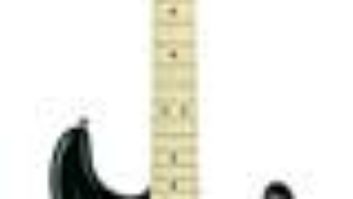
Leaving your teens is always an event, even if you’re a mic preamp. Commemorating the upcoming 20th anniversary of the VTMP-2, Demeter Amplification is making a limited-edition version of the current VTMP-2c. Each of the hand-built versions will be tested, signed and numbered by James Demeter.
To provide some historical perspective, in 1985, Demeter Amplification began producing a tube-based microphone preamp, the VTMP-2. For those whose memory of the recording industry in 1985 is a little vague, stand-alone microphone preamps were not that common; in general, mic pre’s were part of the console. And tube mic preamps were even less common: When the VTMP was introduced, it was the only tube preamp being made.
SO WHAT’S IN THE BOX?
The VTMP-2c Limited Edition is a 2-channel preamp, with each channel offering between 30- and 65 dB of gain. Each channel has a continuously variable gain control and an output volume knob, plus switches for low cut (with a choice of 6- or 12dB roll-off), a 20dB pad, phantom power and phase. The large 10-segment LED meters show either dBu or peak levels, as well as an overload indicator. In addition to XLR inputs, each channel also has ¼-inch DI inputs on the front of the two-rackspace unit. Available outputs include XLR, TRS and ¼-inch unbalanced outs.
The VTMP-2c uses Jensen 110KhPC input transformers and has active balanced outputs (which use Burr Brown DRV-134s). The tube complement comprises two 12AX7as, two 12BH7As and one 12AT7a. The input impedance is 1k for microphones and 1 MB for the instrument, while the output impedance is 50 ohms balanced and 100 ohms unbalanced.
OBSERVATIONS
In an era when many microphones (and for that matter, a number of preamps and other signal processors) appear to have become “brighter,” it’s nice to have a tool available that can help mitigate that harshness. The VTMP-2c does an excellent job of doing exactly that. When recording a fairly bright Taylor acoustic guitar with a pair of Neumann/Gefell M-582s, the Demeter smoothed out the recorded signal’s top end in an extremely natural way, without making the guitars sound muddy or muffled. The same smoothing effect was evident when using the VTMP-2c on overheads. I’ve had issues in the past with some overhead tracks being a bit strident, especially when using 414s or UM57s (East German Neumanns) as overhead mics. The VTMP-2c’s low end didn’t sound boomy or muddy, but the top end had a smooth roll-off that seemed to be a bit more pleasing than some of my other preamps.
Some (though not all) vocals benefited from this roll-off, as well. A couple of the singers who were recorded through the VTMP-2c sounded more natural than with my usual vocal preamps, both with ballad-type material and screaming rock tracks. In keeping with what I found elsewhere, this was dependent more on the singer’s voice than anything else. With only a few exceptions, darker voices sounded fine (as always) or were possibly a bit muffled when using the VTMP-2c. Bright voices, and those with an edge to them, typically sounded smoother — at least, a bit less EQ was needed at mix time to smooth them out.
That I found the VTMP-2c to be less edgy than most other preamps should not be construed to mean that it is overly dark. When recording trumpet with an RCA 44 (with up to 65 dB of gain available, this preamp handles even vintage ribbon mics with no problem), the sound was everything that I wanted: present, full and with just the right amount of edge to sit comfortably in the track. The pad switches worked well for applications such as the aforementioned drum overheads, especially when the microphones didn’t have pads of their own. The low cut was a handy tool for cleaning up extraneous noise on relatively high-frequency sources such as mandolin. I found that the gentler 6dB-per-octave roll-off was more usable than the 12dB setting, which tended to be a bit aggressive for my taste.
The DIs worked as advertised on bass and keyboard modules, yielding a solid bass sound (and, because I’ve owned Demeter’s bass preamp for close to 10 years, a familiar sound) and adding a certain desirable thickness to keyboards. And if the natural sound of the preamp isn’t quite enough, the VTMP-2c can be overdriven for more of an edge.
CONCLUSIONS
Like the earlier iterations of the VTMP-2, Demeter’s VTMP-2c is a solid workhorse preamp with a fairly distinct vibe. A number of changes and enhancements have been made to the unit over the years, but the VTMP-2c still has the classic Demeter sound. Stand-alone preamps are a much larger part of the recording process than they were when the original VTMP-2 was introduced (and, indeed, are a much larger part of the audio industry), but the attributes that made the original VTMP-2 a success are still a part of this latest version.
With a manufacturer’s direct price of $1,899, the VTMP-2c Limited Edition falls squarely in the middle of the preamp price spectrum — a fairly crowded segment of the market. However, once you consider the flexibility and sonic quality represented by the Demeter VTMP-2, this preamp becomes a relative bargain. Overall, it seems a good value and would be an excellent part of a well-rounded mic pre collection.
Demeter, 818/994-7658, www.demeteramps.com.
Martin Allen is a Nashville-based producerand engineer.





